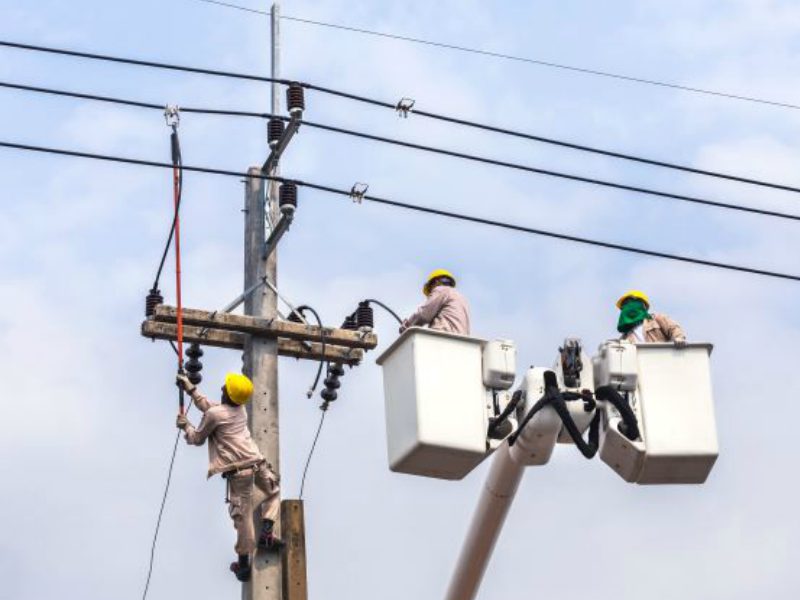Uganda’s stranded capacity elevates energy costs
Uganda’s grid losses keep tariffs near $0.10/kWh as USDUGX=X stays sensitive; credible execution could cut losses below 14% by 2026 and compress the term premium, with FM tracking frontier-market risk appetite into 2027.

Uganda’s power sector has expanded generation materially but has not translated that capacity into reliable supply. Installed capacity reached about 2,050 MW by mid-2024 after large hydropower additions, while maximum system demand was roughly 1,030–1,060 MW in 2024/25, leaving headline headroom above 900 MW. Yet end-user reliability remains weak because the grid cannot evacuate and stabilise the additional megawatts. Technical and commercial losses across transmission and distribution exceed 20% on recent audits, and redundancy on key corridors is limited. The policy signal is clear: the binding constraint is the network, not generation.
Macro conditions sharpen the trade-offs. Real GDP grew near 6% in FY 2023/24 and headline CPI averaged about 3–4%, but fiscal space is tight. General government debt stood around 50–52% of GDP by Q1 2025, and interest costs on the domestic book have risen as long-tenor shilling yields print in the mid-teens. Capacity-charge obligations to independent power producers remain significant even when plants are under-dispatched, converting the supply-demand mismatch into a cash-flow problem for the state. The budget therefore finances idle capacity while manufacturers fund backup generation to manage voltage and outage risk—an efficiency loss that widens the non-oil trade deficit and absorbs scarce FX.
The transmission mechanism from power inefficiency to macro outcomes is direct. Grid losses and congestion elevate the delivered cost of electricity; large-industrial tariffs typically clear near $0.10/kWh at prevailing FX, above regional benchmarks. Firms substitute with diesel sets during instability, lifting fuel imports and adding basis points to core goods inflation through logistics and input costs. The additional FX demand pressures the shilling (USDUGX=X) during import spikes, forcing tighter domestic liquidity to anchor inflation expectations. That interaction sustains a term premium in government bond pricing, keeping the 10-year nominal yield elevated and crowding out private-sector credit at the margin.
Comparators highlight the opportunity cost. Ethiopia’s utilisation rates are higher because transmission was rolled out alongside generation, supporting load factors above 60–70% on a 5 GW-plus fleet. Ghana’s reliability improved as losses fell from the high-teens toward low-teens over the past decade through targeted grid reinforcement, metering, and governance reforms. Uganda’s sequencing inverted that order—adding generation before building evacuation, redundancy, and reactive-power support—so the capital stock now underperforms. Correcting the sequence requires front-loading grid capex, ring-fencing cash flows, and aligning tariffs to reflect time-of-use and power-factor performance, rather than relying on flat schedules and high fixed capacity charges.
Markets will read progress through spreads, FX stability, and tariff prints. If the authorities execute a dated, funded grid plan—commissioning priority 132/220/400 kV lines, upgrading substations, and cutting technical/commercial losses—industrial tariffs can move below $0.10/kWh by 2028 without adding new generation. That cost compression would lift manufacturing value added, reduce diesel substitution, and narrow the goods deficit, easing pressure on USDUGX=X and allowing the central bank to maintain price stability with less aggressive liquidity management. Sovereign risk premia would compress as arrears decline and contingent liabilities stabilise; the local 10-year point could tighten by 50–75 basis points against regional peers if execution credibility is established.
Forward tests are measurable and time-anchored. By Q4 2026, combined network losses should print below 14%, capex execution on priority grid projects should exceed 70%, and sector arrears should fall toward USh 1 trillion. By end-2027, recorded industrial uptime hours should rise at least 10% year-on-year and backup-diesel imports should decline on a rolling 12-month basis. By end-2028, peak demand should surpass 1,200 MW with average large-industrial tariffs below $0.10/kWh at market FX.
Meeting these thresholds would convert idle megawatts into competitive electricity, lower funding costs, and raise Uganda’s non-commodity growth ceiling. Missing them would entrench stranded capacity, keep local yields elevated, and perpetuate a currency-energy feedback loop that constrains investment.





